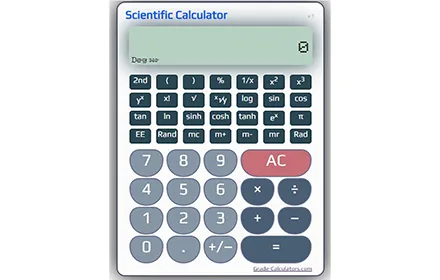In the demanding world of HVAC, your expertise is undeniable. You diagnose complex systems, brave the elements, and ensure the comfort and safety of your customers. Yet, one of the most persistent challenges isn’t found in a faulty compressor or a refrigerant leak—it’s in the office, on the pricing sheet. How do you translate your technical skill into financial success without scaring away clients or selling yourself short? The answer lies in moving beyond gut-feeling pricing and embracing a data-driven approach, centered around a powerful tool: the HVAC service markup calculator.
This isn’t just about slapping a random percentage on a part. It’s a strategic methodology for ensuring your business not only survives but thrives. This comprehensive guide will walk you through the critical components of profitable pricing, how to effectively use an HVAC service markup calculator, and the advanced strategies that separate struggling contractors from market leaders.
Why “Cost Plus a Little” is a Recipe for Disaster
Many HVAC business owners start with a simple, seemingly logical pricing model: take the cost of the part and add a “little something” for profit. This approach, often called “cost-plus pricing,” is fraught with peril.
- It Ignores Overhead: Your price must account for far more than the condenser unit or thermostat you’re installing. It must cover your truck payments, insurance, software subscriptions, marketing, rent, utilities, and administrative salaries.
- It Undervalues Your Expertise: The cost of the part is the smallest part of the value you provide. Your knowledge, diagnostic skill, training, and guarantee of quality work are what the customer is truly paying for.
- It Leads to Inconsistency: Without a standard, your prices will fluctuate, leading to confusion, potential customer distrust, and an unpredictable cash flow.
Understanding this is the first step toward pricing maturity. The goal is not to charge more, but to charge correctly.
Deconstructing the True Cost of an HVAC Service Call
Before you can even think about markup, you must have a crystal-clear understanding of your costs. These break down into two primary categories: Direct Costs and Indirect Costs (Overhead).
Direct Costs (The Obvious Expenses)
These are the costs directly tied to a specific job.
- Labor: The hourly wage of the technician on the job. Crucially, this is just their wage, not the fully burdened labor cost (which we’ll cover under overhead).
- Materials & Equipment: The physical parts—the compressor, the line set, the filter, the refrigerant.
- Subcontractor Fees: Payments to specialized subcontractors for specific tasks, like electrical work or crane rental.
Indirect Costs / Overhead (The Silent Profit-Killers)
This is where many businesses miscalculate. Overhead is the cost of simply keeping your doors open, whether you complete one job or ten in a day.
- Salaries (Office, Management): Your own salary, your dispatcher, your bookkeeper.
- Vehicle Expenses: Fuel, insurance, maintenance, loan payments, and depreciation.
- Facility Costs: Rent, mortgages, utilities, and property insurance for your office/warehouse.
- Administrative & Software: Liability insurance, tools, accounting software, dispatching systems, customer relationship management (CRM) platforms.
- Marketing & Advertising: Website costs, digital ads, traditional yellow pages, and community sponsorships.
- Training & Certifications: Costs to keep your team’s skills sharp and certified.
To price effectively, you must distribute your total monthly overhead cost across all the billable hours your team works in a month. This gives you an Hourly Overhead Rate.
Introducing Your Strategic Advantage: The HVAC Service Markup Calculator
An HVAC service markup calculator isn’t a single magical number; it’s a structured approach to applying a multiplier to your costs to ensure all expenses are covered and a healthy profit remains. The fundamental formula is:
Price = (Direct Costs + Overhead Allocation) x (1 + Profit Margin)
Let’s break this down into a practical, calculator-friendly method.
Calculate Your Effective Hourly Rate
First, determine what it truly costs to have a truck on the road per hour.
- Total Monthly Overhead: Sum all your indirect costs for a month (e.g., $15,000).
- Total Billable Hours: Estimate the number of hours your team will bill to customers in a month (e.g., 250 hours).
- Hourly Overhead Rate: Divide Total Overhead by Total Billable Hours ($15,000 / 250 hours = $60/hour).
- Hourly Labor Cost: Add the technician’s wage + taxes and benefits (e.g., $30/hour + 30% burden = $39/hour).
- Effective Hourly Rate: Add the Hourly Labor Cost and the Hourly Overhead Rate ($39 + $60 = $99/hour).
This $99/hour is your break-even point. Every dollar above this is profit.
Apply Markup to Materials
Parts cannot be billed at cost. They must contribute to covering overhead and generating profit. This is where a material markup multiplier comes in.
A common and effective method is to use a markup matrix:
- Small, High-Cost Items (Refrigerant, Filters): Lower Markup (e.g., 1.5x to 2.0x)
- Medium Items (Motors, Control Boards): Standard Markup (e.g., 2.0x to 2.5x)
- Large Equipment (Furnaces, AC Units): Lower Markup but with a Minimum Profit Fee (e.g., 1.4x to 1.8x)
Example Markup Calculation:
- Cost of Condenser Motor: $150
- Standard Markup Multiplier: 2.2x
- Customer Price for Part: $150 x 2.2 = $330
Sample HVAC Service Markup Calculator in Action
Let’s price a hypothetical job: Installing a new condenser fan motor.
| Cost Component | Calculation | Amount |
|---|---|---|
| Direct Labor | 1.5 hours x $39/hr | $58.50 |
| Direct Material | Motor Cost: $150 | $150.00 |
| Allocated Overhead | 1.5 hours x $60/hr | $90.00 |
| Subtotal (Cost) | $298.50 | |
| Material Markup | $150 x (2.2 – 1) | $180.00 |
| Total Job Cost | $478.50 | |
| Profit Margin (20%) | $478.50 x 0.20 | $95.70 |
| Final Price to Customer | $574.20 |
This structured approach ensures every cost is covered and a clear profit is achieved.
Advanced Pricing Models for HVAC Businesses
While the cost-plus-markup model is foundational, sophisticated HVAC businesses often blend it with other models.
Flat-Rate Pricing
This model offers tremendous value to both the customer and the business. Customers appreciate knowing the price upfront without surprises. Businesses benefit from streamlined operations and increased revenue per hour.
- How it Works: You create a comprehensive price book for every common service—from capacitor replacement to full system installations. Each price is built using your HVAC service markup calculator to ensure profitability.
- Advantage: Eliminates haggling, builds trust, and allows less experienced technicians to sell confidently.
Tiered Service Agreements
Offer your customers choice and control while maximizing your customer lifetime value.
- Bronze Level: Basic preventative maintenance, minor discounts.
- Silver Level: Comprehensive maintenance, priority service, higher discounts.
- Gold Level: All-inclusive coverage (including parts), top priority, best discounts.
This model creates predictable recurring revenue, which is the holy grail for business stability.
The Human Element: Communicating Value and Justifying Your Price
The most accurate price means nothing if the customer balks. Your technician’s ability to communicate value is paramount.
- Lead with Diagnosis, Not Price: Explain the problem thoroughly, show the faulty part, and educate the customer on the implications of not repairing it.
- Present Options: When possible, offer a good-better-best choice. This gives the customer control and makes your recommended option seem more reasonable.
- Focus on Outcomes, Not Costs: Talk about restored comfort, improved air quality, safety, and energy savings. You’re not selling a motor; you’re selling peace of mind and a comfortable home.
Common Markup Mistakes and How to Avoid Them
- The “Going Rate” Trap: Basing your prices solely on competitors is dangerous. You don’t know their cost structure, and they might be on the path to bankruptcy.
- Fear of Charging What You’re Worth: Undervaluing your service attracts the most price-sensitive, often most difficult, customers.
- Ignoring Market Positioning: Are you the budget option or the premium, highly-skilled expert? Your pricing must reflect your brand positioning.
- Not Reviewing Prices Regularly: Your costs for fuel, insurance, and parts increase annually. Your prices must, too. Conduct a formal pricing review at least once a year.
Implementing Your New Pricing Strategy
- Audit Your Costs: Spend a week meticulously documenting every single business expense.
- Calculate Your Numbers: Determine your true Effective Hourly Rate and define your material markup matrix.
- Develop Your Price Book: Start building flat-rate prices for your most common services using your new calculator.
- Train Your Team: Roll out the new pricing and train your technicians on how to communicate the value effectively.
- Monitor and Adjust: Track your profit margins on each job. Are you hitting your targets? If not, adjust your multipliers.
Conclusion: From Technician to CEO
Mastering your HVAC service markup calculator is more than an accounting exercise; it’s a fundamental shift in mindset. It’s the transition from being a master technician who also runs a business to being a true CEO who understands the financial engine that drives growth. By accurately capturing all your costs, applying a strategic markup, and effectively communicating the unparalleled value you provide, you build a resilient, profitable business that can withstand market fluctuations and invest in its own future. Stop guessing and start calculating your way to success.
Frequently Asked Questions (FAQs)
What is a typical markup for HVAC services?
There is no universal “typical” markup, as it depends entirely on your business’s overhead and profit goals. However, many profitable HVAC companies use material markups ranging from 1.5x to 2.5x (50% to 150%) on parts, with the final price also incorporating labor and overhead to achieve a net profit margin of 10-20%.
How is markup different from profit margin?
This is a critical distinction. Markup is the percentage added to your cost to determine the selling price. Profit margin is the percentage of the selling price that is profit.
- Example: A part costs $100. A 50% markup makes the price $150. The profit is $50, which is a 33% profit margin ($50/$150).
Can I use different markups for different types of jobs?
Absolutely. In fact, you should. A high-efficiency system replacement is a different sale than a service call. Many businesses use a lower markup on big-ticket equipment but ensure a minimum project fee to maintain profitability, while applying a higher markup on diagnostic and repair services.
How does flat-rate pricing use a markup calculator?
Flat-rate pricing is built upon the markup calculator. You use the calculator to determine the true cost of a specific task (including all labor, parts, and overhead), then apply your desired profit margin to create a single, fixed price for that service that goes into your flat-rate book.
How often should I review and adjust my markup percentages?
You should formally review your overall pricing strategy and markup multipliers at least once a year. However, you should immediately adjust your prices if there is a significant change in your costs, such as a sharp increase in fuel or refrigerant prices.



